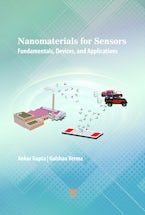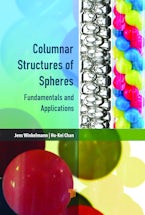Quantum Dot Sensors
Technology and Commercial Applications
“This book provides very interesting insights into quantum dots technology, discussing, with adequate detail, the distinct synthetic approaches and functionalisation strategies, the importance of surface passivation and modification to guaranteeing suitable stability, biocompatibility, and reactivity, and the effect of the size, shape, and composition of quantum dots on their unique photochemical properties.
Special attention is devoted to the optoelectronic properties of quantum dots, in particular how these can be exploited to achieve sensing involving electron and energy transfer-based mechanisms, and to the techniques that can be used to monitor these transfer processes. The toxicology of these nanomaterials is also discussed, mostly with regard to oxidative toxicity, either directly or on generation of reactive oxygen species.
Although covering a broad range of topics related to the preparation, properties, and applications of quantum dots, similar to, for example, Semiconductor Nanocrystal Quantum Dots: Synthesis, Assembly, Spectroscopy and Applications, by Andrey Rogach (Springer, 2010), or Nanocrystal Quantum Dots, 2nd ed., by Victor Klimov (CRC Press, 2010), this book is not entirely devoted to exhaustive analysis of such issues and can, therefore, be regarded as more accessible or reader-friendly; it is, therefore, a valuable resource for researchers new to this field.
The book provides valuable information on semiconductor nanocrystals, describing in detail noteworthy developments in synthetic approaches, surface manipulation of nanoparticles, characterisation of optical and electrochemical properties, and implementation of sensing schemes based on electron-transfer and energy-transfer processes for multiple analyte determination, typically with biological applications. The chapters are attractively organised, and all reviewed topics are meticulously referenced. Although accessible for beginners, this book could also be very useful for experienced researchers, because it clearly emphasises crucial aspects of the material presented and avoids redundant description.”
Prof. João L. M. Santos, University of Porto, Portugal
- Format: Hardcover
- ISBN: 9789814316002
- Subject: Nanomaterials and Nanostructures
- Published: January 2013
- Pages: 230
USD $160.00
For Course Instructors: Inspection Copies
Retailers:











